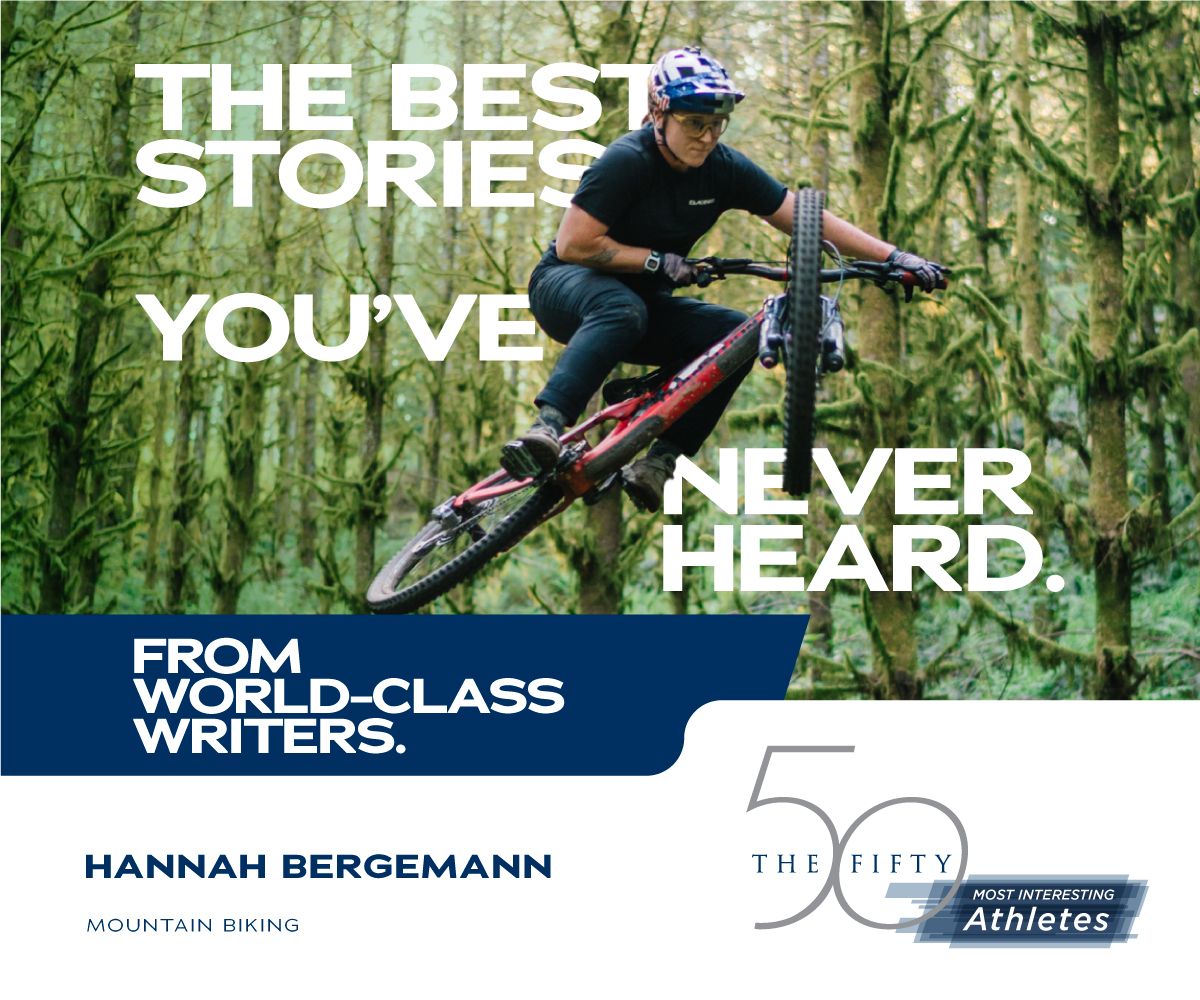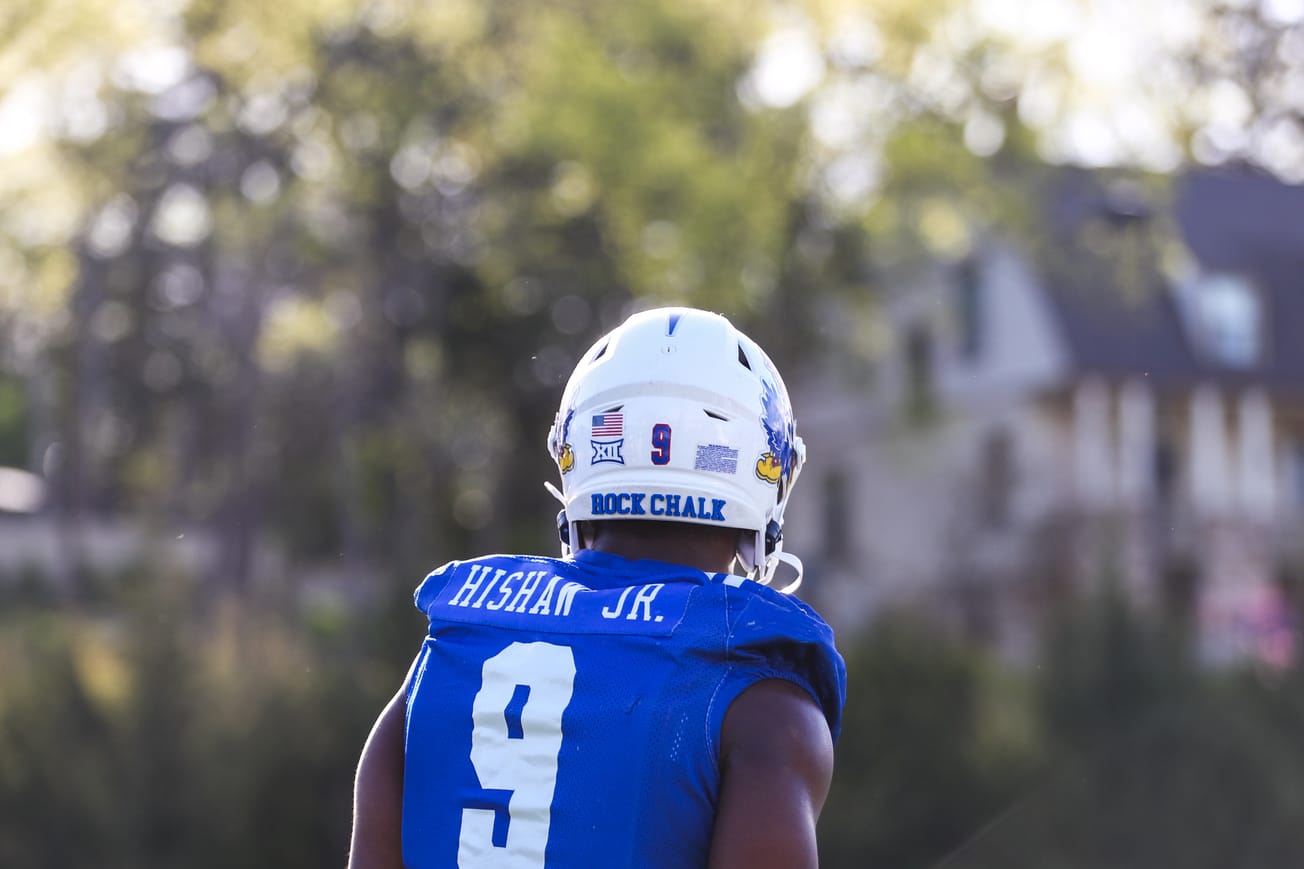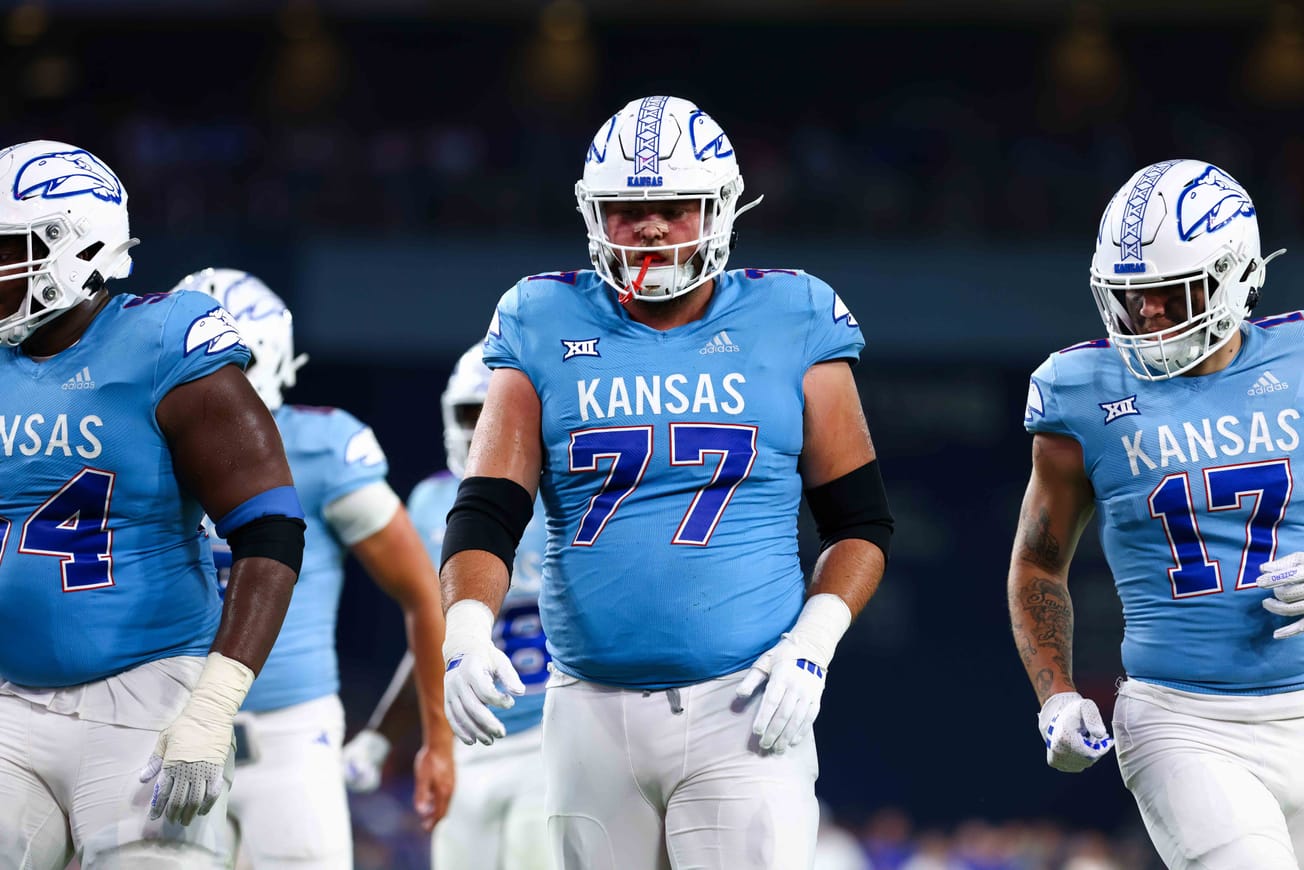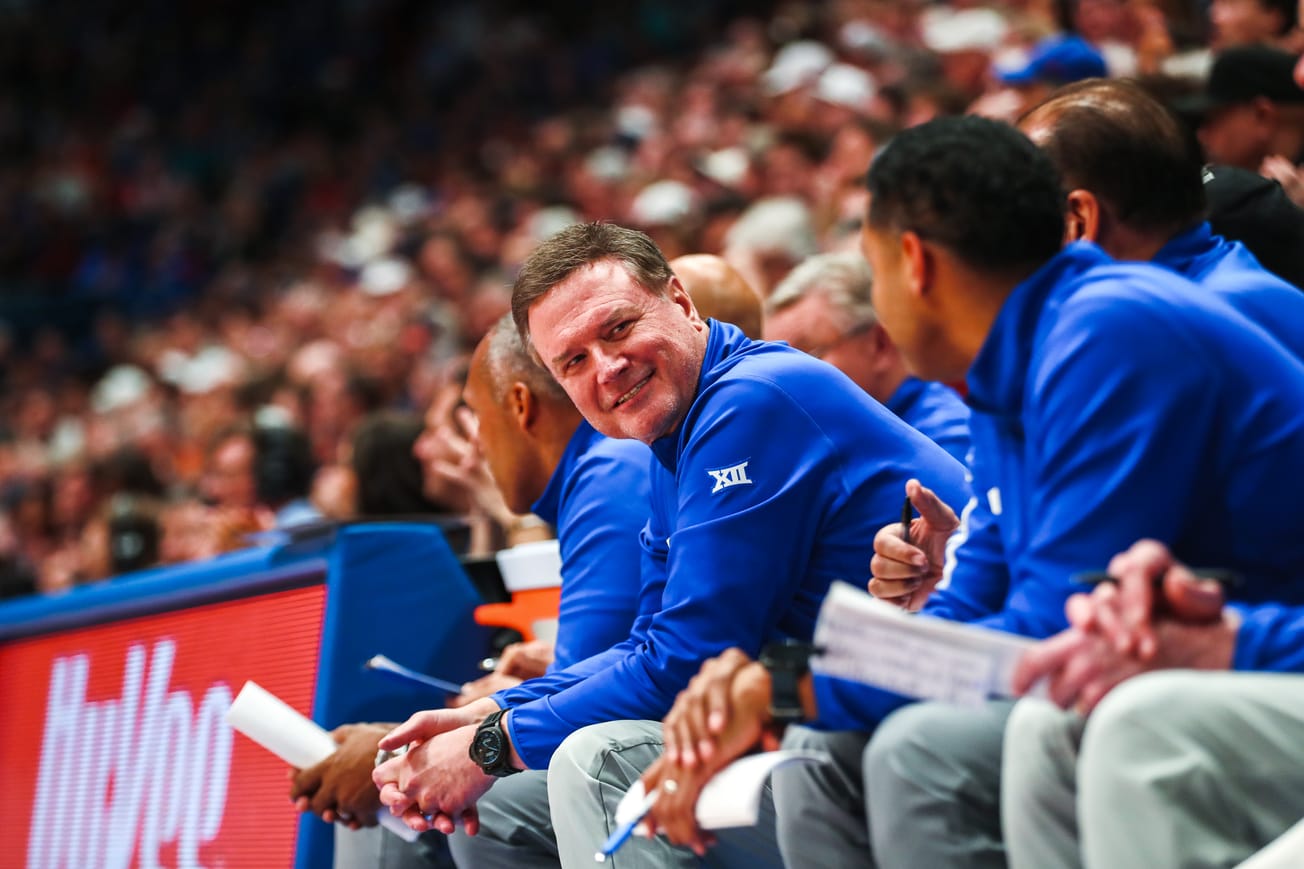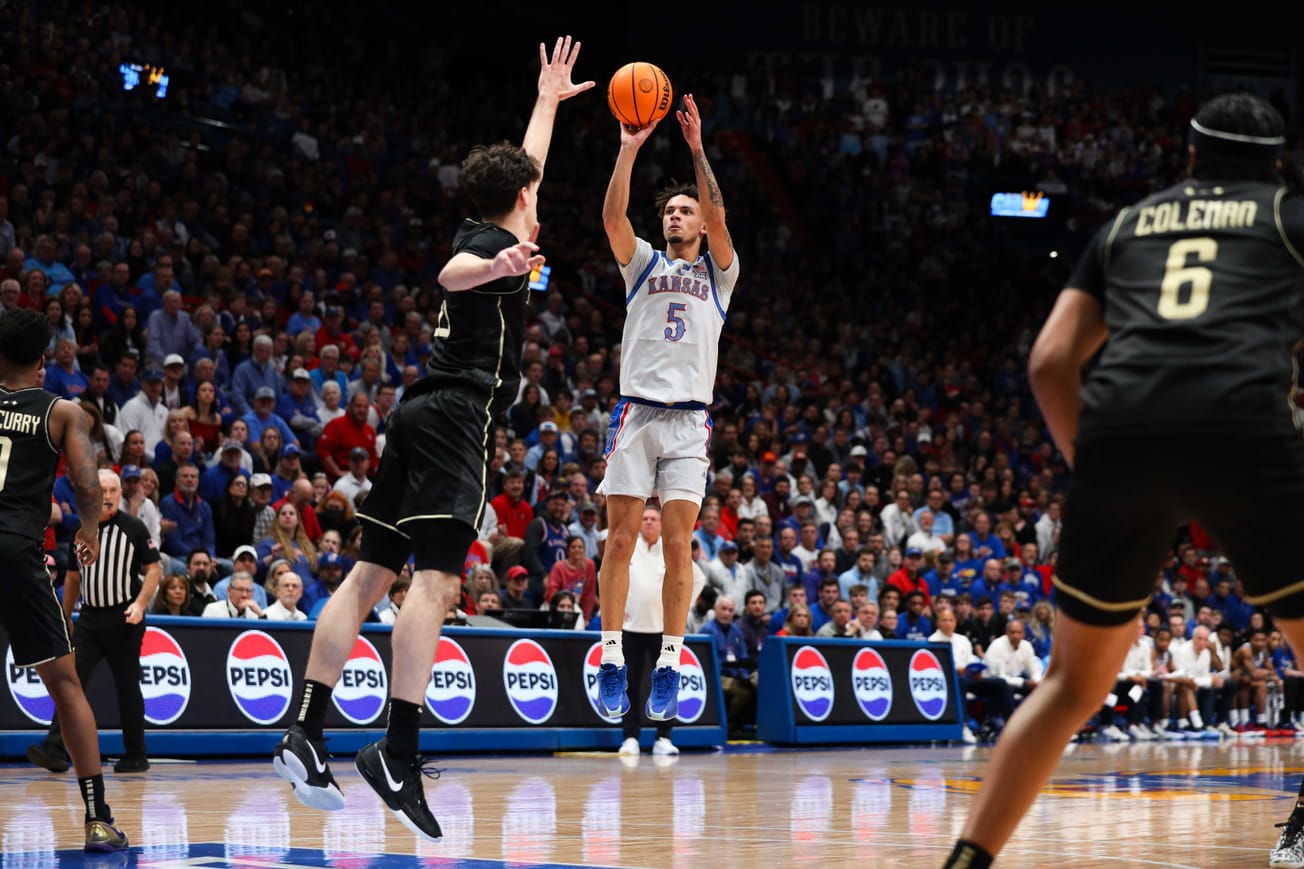There’s a lot to be proud of within the Kansas football program these days, from the results on the field and effort in the weight room to the big-picture projects that have been both completed and planned.
Matt Gildersleeve, KU’s director of sports performance for football, has played a sizable role in several of the areas that have led to positive momentum for the program, but there’s one thing he has more pride in than anything else.
It’s not the 69 players who now run faster than 20 miles per hour, up from two players when he arrived and 42 last year.
Nor is it the overhaul of the physical condition of several players, creating leaner, faster, stronger Jayhawks. Increasing team speed was a top priority — “muscle moves mass, fat won’t fly,” Gildersleeve says — and more players are moving better and faster than ever these days.
Heck, even the new weight room, which Gildersleeve said is like a “dream home” for a strength coach, does not register as high on his list as the No. 1 source of pride for KU’s top muscle man.
Instead, it’s the 500 hours of community service that the Jayhawks collectively put in during a seven-week period this summer.
“We had 18-to 22-year-old kids that went out there and sacrificed their time in the middle of summer when they could’ve been doing whatever they wanted,” Gildersleeve said recently. “And they already had to see me once a day for a couple hours. They’ve already worked out; this is all afternoon stuff and none of this (was) mandatory. We demand a ton of stuff in this program on a daily basis, and it ain’t easy to be here. It’s very demanding and it’s very rewarding in the sense of what I think they’re going to get in life out of this program.”
Director of Football Relations and former all-Big 12 safety, Darrell Stuckey, is at the center of a lot of the Jayhawks’ community outreach efforts.
And he, like Gildersleeve, is a big believer in the fact that a player’s impact is only as good as what he does for the world around him.
For the Kansas football program, that world is pretty vast.
“For us to get the individuals that we want to bring into the program, this stuff is important." — Ashley Goodman, KU football director of player development
Whether it’s bagging groceries and walking people to their cars, cleaning up Mass Street, participation in the Juneteenth parade, a Lawrence School District special education field day or a food drive through Checkers and United Way, the Jayhawks made their impact felt in all sorts of ways this summer. All of it while putting in the work to make sure the program takes another step forward on the field this fall.
There’s competition within the community outreach portion of the program, too. During the first summer with head coach Lance Leipold at the helm, the Jayhawks logged 266 hours of public service. In Year 2, that number grew beyond 400 hours. And that jump pushed this group to reach 500 hours this summer. Beyond that, Stuckey said pretty much every player on the roster — “100-plus” — participated in at least one outreach event this summer.
Few initiatives showed the Jayhawks’ personalities quite like the read-a-thon that drew participation from nearly half the roster. On one random day this summer, the players walked into the Gridiron Room at the Anderson Family Football Complex to find 75 children’s books spread across the flower. One by one, they each picked one up and started reading. First, they started their video cameras. Recording themselves reading the books makes it possible for Jayhawks to reach more than just one classroom. In fact, Stuckey said several players provided information for their own elementary schools in their hometowns and the videos were sent to those kids, as well.
Picking their favorite player-reader was easy.
“They got (quarterback Jason) Bean to read a book called Hair Love,” Stuckey recalled. “It’s about a dad that’s trying to help his daughter who has hair like Bean, and he read it for them. It was pretty funny.”
The whole point of the read-a-thon and other programs is to create a meaningful connection to the community while further establishing the culture that Leipold and his coaching staff believe is important and want to create.
Whether these young kids go to the games or just watch on TV, Stuckey said several of them get to experience those “he came to my school or he did this with us” moments when they see their new friends do well on Saturdays.
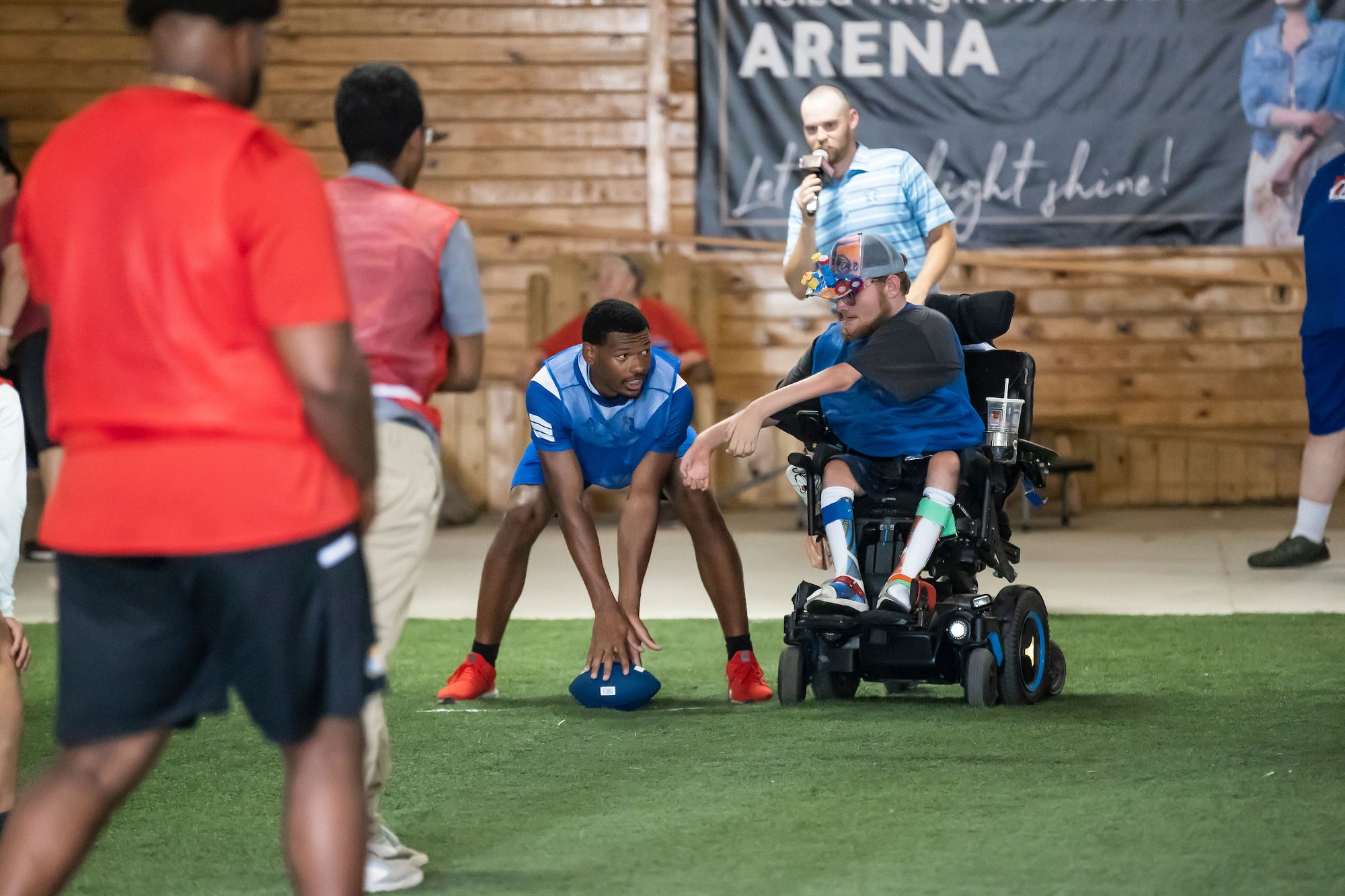
Stuckey knows because he lived it. Back in his playing days, community outreach programs were a huge part of Stuckey’s KU experience. So much so that they nearly got him in trouble with then-head coach Mark Mangino.
Stuckey participated in so many outreach programs during the spring and summer that Mangino thought he was doing some of them in-season.
“He called in (administrators) and asked them to verify when I did certain things,” Stuckey said with a laugh. “It was big for me then, and it’s big now that we, as a staff, have a clear picture of what we want our student-athletes to have access to as well as what tools we use to build them.”
Ashley Goodman, KU’s director of player development who works closely with Stuckey to get the KU players involved in these programs, said that these events are a big part of KU’s recruiting process, as well. Parents want to know details of KU’s plan for developing their kids and Goodman said this is a huge part of their presentation. It’s not just about getting faster or lifting more weight.
“For us to get the individuals that we want to bring into the program, this stuff is important,” she said. “It’s just the opportunity for them to find the eye-to-eye connection with their fan base. It gives them and the community a bit more of a connection. And whether we’re winning or losing, we need that support and we want that personal touch to it.”
It’s all personal for Gildersleeve, as much because of the bond he himself has created with the current Jayhawks as for the deep connection and years spent as a steward for Leipold’s programs.

“We talk about this program and wins and losses and that’s great,” Gildersleeve said. “That’s always going to be important, and I don’t want anyone to think that we’re not going to prioritize competing at the highest level here. But inside these walls, what these guys are buying into and doing, any question you have, those are the answers. It’s the players."
"Wins and losses, we’re gonna give ’em hell, man," Gildersleeve added. "We’re going to do whatever we can to compete at a championship level here. But one thing I’m super-confident in is we are producing men that are getting ready to go out in the real world and that’s why I show up every day and do this. And to have a head coach that believes in that, that truly believes in that and truly pushes that, that’s as special as can be.”
So, now that the Jayhawks have nearly doubled their volunteer hours from Year 1 to Year 3, what’s the goal for Year 4?
“That’s not up to us,” Stuckey said. “It’s up to them. And I think that’s why it works because it’s empowering to them.”
— For tickets to all KU athletic events, visit kutickets.com
